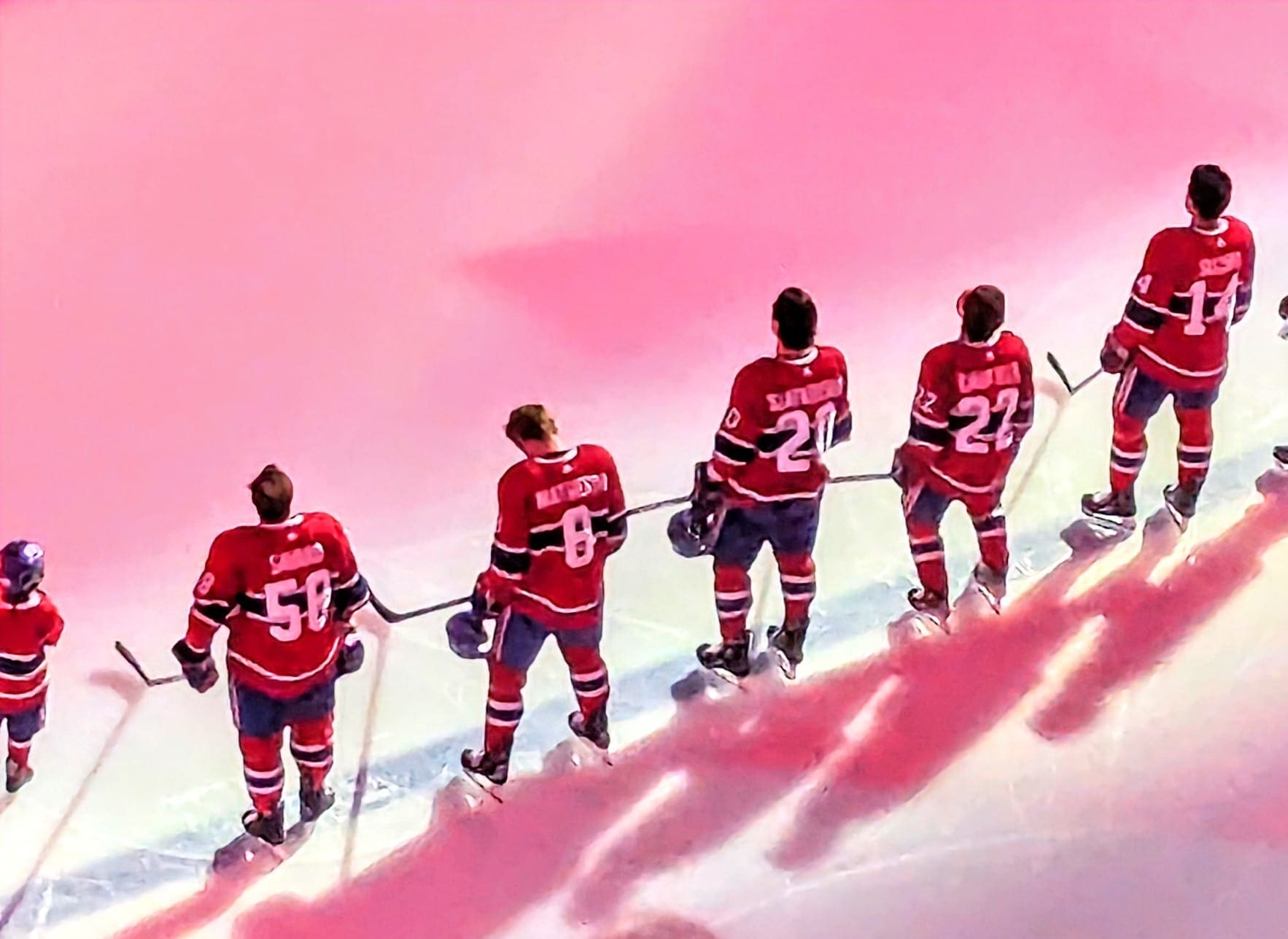Canadiens Analysis
Encouraging Canadiens Statistics With Slafkovsky On Top Line

The Montreal Canadiens have something interesting brewing on the top line.
Historically, finding a linemate to play alongside centre Nick Suzuki and winger Cole Caufield has been a challenge for head coach Martin St-Louis. The only two players who produced reasonably healthy results last season at 5v5 while playing with the pair weren’t actually wingers.
They were centres; Sean Monahan and Kirby Dach.
And while it’s always important to get your first line rolling, removing one of the team’s centres from another line to have them play on the wing with the first line is not an ideal solution.
It’s essentially robbing Peter to pay Paul.
And St-Louis was running out of options that would maintain strength down the middle of the lineup.
On December 7, he finally gave Juraj Slafkovsky another shot at playing on the first line. His first audition lasted just two games, but St-Louis showed much more patience this time around, and the early signs have been very encouraging.
Process Versus Results
On the surface, the results haven’t been particularly exciting. The line is creating chances, but they’ve had a very hard time scoring.
That puts St-Louis in a difficult position.
His job is to win games, a challenge made much more difficult if the top line isn’t scoring goals with regularity. That’s why Saturday’s game-winning goal against the New York Islanders was so important, it was the culmination of a lot of smart plays by the trio.
Some good work by Slafkovsky in deep leads to a Cole Caufield goal. Suzuki also gets an assist. All Habs now.
4-0 #GoHabsGo pic.twitter.com/ZT49pbfWMM
— Marc Dumont (@MarcPDumont) December 17, 2023
The goal also allows St-Louis to justify keeping the line together going forward, which is exactly what the (stats) doctor ordered.
To get a better idea of Slafkovsky’s impact on the top line, we can take a closer look at the numbers.
We’ll evaluate four different numbers. The first is shot share (CF%), the second is goal share (GF%), the third is high-danger shot share (HDCF%), and the fourth is expected goal share (xGF%).
The first three are descriptive statistics, in that they let you know what the line has done in the past. whereas the xGF% metric is predictive, giving us a good idea of what the line should do in the future.
Montreal Canadiens Stats Pack – Top Line Numbers With Various Linemates
When Monahan was on the top line last year they enjoyed their strongest share of shots (CF%) and goals (GF%), but it was not sustainable, as evidenced by their low share of quality chances and expected goals.
Things looked a lot better when Dach was playing on the top line. The team had decent control of shots and goals, but they also managed to control more than 50 percent of the high-danger chances, quite a feat when we consider the Canadiens were among the bottom-five teams in the NHL last season in high-danger shot share. Consequently, their expected goals rose above 50 percent for the first time in a long time.
And now we get to Slafkovsky’s impact on the top line.
Things are a little different this year, granted. Everyone is a year older and a year wiser.
But the results have been more than just encouraging. They’ve been fantastic from a statistical standpoint.
They have controlled roughly the same percentage of shots and goals, but have enjoyed a significant uptick in high-danger shot share and expected goals.
For reference, controlling over 50 percent of the high-danger chances and expected goals is good.
Push that number to 55 percent, and you’re entering elite territory.
With Slafkovsky on their wing, Suzuki and Caufield have controlled 60 percent of the high-danger chances, and 59.6 percent of the expected goals.
In other words, Slafkovsky has made a greater impact on the top line this season than Dach did last year.
#NHL GameScore Impact Card for Montreal Canadiens on 2023-12-16:#GoHabsGo pic.twitter.com/MBNTApCvjf
— HockeyStatCards (@hockeystatcards) December 17, 2023
Brass Tacks
Simply put, the process has been excellent.
With Slafkovsky acting as a physical presence down low, Suzuki has had much more freedom to set up plays in the offensive zone. And, of course, Caufield is the finisher, the one who is meant to score once Suzuki and Slafkovsky create turnovers.
Slafkovsky's forecheck leads to a great scoring chance for Suzuki. #GoHabsGo pic.twitter.com/nb0vn08ic9
— Marc Dumont (@MarcPDumont) December 5, 2023
Some may argue that while the process has been great, the results haven’t quite caught up. And they’d be right.
But given how well Slafkovsky, Suzuki and Caufield have played since being put together, there are very low odds that the line would maintain such a low level of production.
If anything, the tea leaves are indicating the line is due for a significant uptick in production.
Of course, it’s early, and the line will have to start producing more often to justify the minutes, but as it stands, St-Louis has tapped into something very interesting by placing Slafkovsky on the top line.
All Montreal Canadiens statistics are 5v5 unless otherwise noted, via Natural Stat Trick.











